Using the TI-83 Plus/TI-84 Plus
Christopher R. Mitchell

Copyright
For online information and ordering of this and other Manning books, please visit www.manning.com. The publisher offers discounts on this book when ordered in quantity. For more information, please contact
Special Sales Department Manning Publications Co. 20 Baldwin Road PO Box 261 Shelter Island, NY 11964 Email:
orders@manning.com2013 by Manning Publications Co. All rights reserved.
No part of this publication may be reproduced, stored in a retrieval system, or transmitted, in any form or by means electronic, mechanical, photocopying, or otherwise, without prior written permission of the publisher.
Many of the designations used by manufacturers and sellers to distinguish their products are claimed as trademarks. Where those designations appear in the book, and Manning Publications was aware of a trademark claim, the designations have been printed in initial caps or all caps.
 Recognizing the importance of preserving what has been written, it is Mannings policy to have the books we publish printed on acid-free paper, and we exert our best efforts to that end. Recognizing also our responsibility to conserve the resources of our planet, Manning books are printed on paper that is at least 15 percent recycled and processed without the use of elemental chlorine.
Recognizing the importance of preserving what has been written, it is Mannings policy to have the books we publish printed on acid-free paper, and we exert our best efforts to that end. Recognizing also our responsibility to conserve the resources of our planet, Manning books are printed on paper that is at least 15 percent recycled and processed without the use of elemental chlorine.
 | Manning Publications Co.20 Baldwin RoadPO Box 261Shelter Island, NY 11964 | Development editor: Jeff BleielCopyeditor: Linda RecktenwaldProofreader: Tiffany TaylorTypesetter: Dennis DalinnikCover designer: Leslie Haimes |
ISBN: 9781617290848
Printed in the United States of America
1 2 3 4 5 6 7 8 9 10 MAL 19 18 17 16 15 14 13
Brief Table of Contents
Table of Contents
Preface
When I was 13 years old, I received my first graphing calculator. It was Christmas, and my biggest present under the tree turned out to be a TI-83 I had ardently wanted. I was thrilled. I first used it just for math, but over the course of a few months, I became more curious and discovered that I could write programs directly on the calculator. I explored increasingly more complex programs and games, first written in the calculators built-in TI-BASIC language and then later in z80 assembly. I started an online community called Cemetech (pronounced KEH-meh-tek), first to showcase my own programs and later to teach others how to use and program TI calculators. Cemetech thrives to this day, driven by a core of dedicated volunteers of all ages who are passionate about math, science, computer science, engineering, and programming.
I have been fortunate to have received many opportunities to get an early start with teaching. My first teaching experience was in third grade, when I taught my classmates how to build a battery and light bulb circuit out of thumbtacks, paperclips, and wires. Aside from my ongoing self-imposed teaching on Cemetech for over a decade, I taught Java to professional engineers as an undergraduate engineering student at Cooper Union. I later served as the graduate teaching assistant for a C programming and computer architecture course at the Courant Institute of NYU. My career as a student has led to two degrees in electrical engineering and one in computer science; Im now working toward my doctorate. I credit much of my love of programming and engineering to those first faltering steps with my graphing calculator.
Although I first fell in love with graphing calculators as a programming and engineering tool, I simultaneously came to appreciate their value as powerful teaching tools. The number of undergraduates pursuing science, technology, engineering, and math (STEM) majors in the United States has been steadily declining; I believe comprehension and interest in math and science have been declining as well. Although nothing can replace enthusiastic teachers and engaged students in the classroom, I feel that graphing calculators can help students learn math and science more effectively. With calculators, students can more readily visualize graphs and functions, calculus, statistics, and more. If students learn to use their calculators properly, they (or you!) can build a more intuitive understanding of the subject matter without sacrificing the ability to do all the math by hand. Ideally, students should understand that graphing calculators solve problems just like them, and that its not a magic black box that pulls answers from thin air. What you do by hand when you solve out a problem is exactly what your calculator does; the only difference is that it can manipulate the numbers much faster and has infinite patience for repeatedly solving problems.
Because Ive been so enthusiastic about graphing calculators as a teaching tool, for programming and for math and science, it was with excitement that I accepted Mannings invitation to write Programming the TI-83 Plus/TI-84 Plus last year, which is now widely available to teach beginner programmers. With the successful completion of that first book, we discussed where I might want to go next with my writing career. Canvassing the available books on using graphing calculators for their primary intended purpose, math and science instruction, left me underwhelmed by many of the current offerings. I set off on writing this book with the goal of making graphing calculators as simple and approachable as possible via a multitude of examples. If students are going to be solving specific problems in class, what better way to prepare them than to show them many specific problems solved out?
Of course, any book on graphing calculators also has to be an effective quick reference guide for students who are in a hurry to complete a homework assignment or prepare for a test, and the 13 chapters of this book are peppered with sidebars for quick reference. offers suggestions for solving problems big and small.
I hope that you enjoy reading and using this book as much as I enjoyed writing it. Of course, theres always more that I can learn about teaching (and using and programming!) graphing calculators, so I hope to hear from you. Dont hesitate to drop me a line if you find this book helpful or if you have any comments or suggestions. Perhaps youll want to show off calculator projects and programs of your own on Cemetech.
Good luck!
Acknowledgments
Thanks must first go to the friends, family, and other loved ones who have supported my teaching, programming, and engineering career throughout the years. Id especially like to acknowledge my mother, Maria Mitchell, for giving me my first calculator, for always supporting my education, and for offering selfless moral support during this books creation. My friends and loved ones have been patient with my hobbies and projects and have always been ready with words of encouragement; Sara Nodroff in particular encouraged me to undertake this project and was supportive through the many hours I spent on it. Im also grateful to teachers and advisers current and past who helped me get where I am today, especially to Jinyang Li, who was understanding of me threading the writing of this book around my PhD research.
Although my first forays into using and understanding calculators took place on my own, the members of the worldwide graphing calculator enthusiast community have been my colleagues and friends for over a decade. It is impossible to name all of the individuals who have made a difference for me here, so if I dont specifically acknowledge you, know that I treasure your help, inspiration, and camaraderie nonetheless. I must first tip my hat to my Cemetech administrators, staff, and friends, who have stood by me through my technical and personal struggles and achievements. Thomas Elfprince13 Dickerson and Daniel TIFreak8x Thorneycroft have been with Cemetech since its early days and have encouraged my projects for more than seven years, though more recent additions, Shaun Merthsoft Mcfall and Jon Jonimus/TheStorm Sturm have become my valued friends and colleagues. Other Cemetech staff past and present have been my teachers, students, and friends, including Theodore Davis, Alex Glanville, Kenneth Hammond, Catherine Hobson, Peter Marheine, Jonathan Pezzino, and many more. Im grateful to all of the Cemetechians who provided feedback and corrections for this book, especially Ryan Phero Boyd, this books technical proofreader and an unassailably enthusiastic ticalc.org news editor.

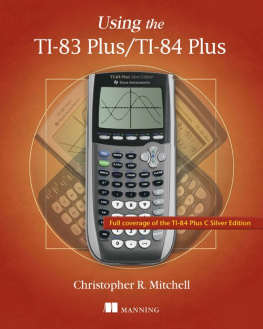
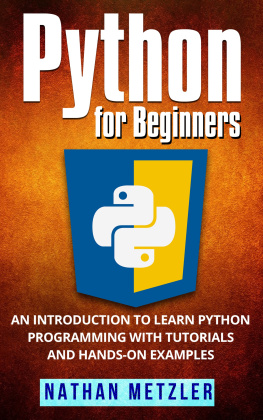
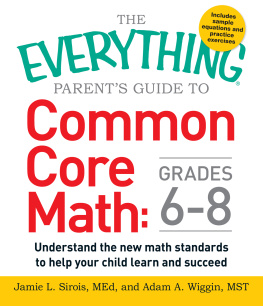



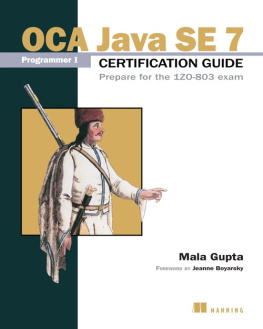
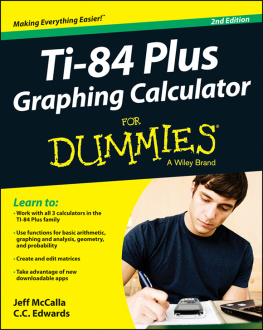

 Recognizing the importance of preserving what has been written, it is Mannings policy to have the books we publish printed on acid-free paper, and we exert our best efforts to that end. Recognizing also our responsibility to conserve the resources of our planet, Manning books are printed on paper that is at least 15 percent recycled and processed without the use of elemental chlorine.
Recognizing the importance of preserving what has been written, it is Mannings policy to have the books we publish printed on acid-free paper, and we exert our best efforts to that end. Recognizing also our responsibility to conserve the resources of our planet, Manning books are printed on paper that is at least 15 percent recycled and processed without the use of elemental chlorine.